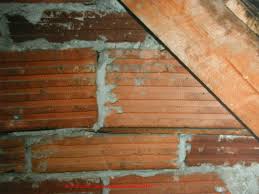I’m renovating the kitchen and bathroom on a 1950s semi-detached house, the inner leaf of the bricks are made of hollow clay bricks (see images attached) - I found they are very fragile and ductile, the ‘web’ section is easily fractured due to the hollow design.


Now I will need to add new sockets as there is only one double socket in the entire kitchen,
Now I will need to add new sockets as there is only one double socket in the entire kitchen,
- Does the 1/3 vertical 1/6 horizontal chasing rule for normal bricks still apply for the hollow clay bricks?
- The existing wall are covered with sand & cement plaster (approx 10mm thickness), is it enough to bury the cable (with or without capping?) if I just chisel a channel of the old plaster off the wall and not touching the bricks? I already bought a cheap wall chaser for this job, so depth can be maintained. The ring final circuit is RCD protected.
- I guess for the back box the damage is unavoidable due to the depth required?


